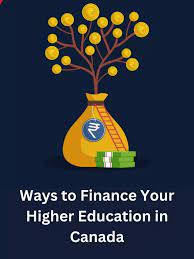
You reside and attend school in Canada, so what else is there for you to comprehend about our country’s education system? You may not even contemplate your education pathways until you’re in your final year of high school. At this juncture, you may only be cognizant of two options: college and university. However, there’s more to the education system of Canada than that. What if you desire to obtain a master’s degree after a college diploma — is that even feasible? Discover all your higher education alternatives to discover the path meant for you:
Your education pathway in all of Canada, except Quebec
Secondary school in Canada looks identical everywhere you go — except in Quebec. You’ll complete four years of high school — grades nine to twelve — and then choose your post-secondary choice. Will you attend college or university? Which one will aid you in joining the workforce faster? Examine your options for studying in the English-dominated provinces of Canada — Alberta, British Columbia, Manitoba, New Brunswick, Newfoundland and Labrador, Northwest Territories, Nova Scotia, Nunavut, Ontario, Prince Edward Island, Saskatchewan, and Yukon:

Everything appear familiar thus far? You may have a relatively good notion of what your education pathway resembles in your respective province, but you might not be aware of what other provinces are executing as well.
Did you know that the Northwest Territories and Nunavut lack colleges and universities? Students in these regions may be capable of earning a degree through partnerships or attending school outside of the territories.
In addition, British Columbia also offers associate degrees! These are two-year undergraduate programs that aid in the transition to the final two years of a bachelor’s degree at a university. They’re predominantly offered by colleges, but some universities offer them as well.
Furthermore, you might have encountered two distinct types of colleges. What differentiates a college from a career college? Excellent query! Career colleges are private post-secondary institutions that provide career-specific programs. Public colleges are government-funded, which means lower tuition fees! They also offer a wider array of courses.
Thus, if you desire a direct and consistent education that is similar across the country, then studying at any of the provinces in Canada — excluding Quebec — could be the optimal choice for you. You may choose to remain in your own province or venture across the country for a comparable education pathway.
The education pathway of Quebec
The education system of Quebec is slightly distinct from the rest of Canada’s. In Quebec, your secondary school education lasts from grade seven to eleven, after which you’ll proceed to a college or university education. Take a look at what a typical pathway for a student in Quebec resembles:

That was the conventional education pathway that many students in Quebec may choose, but it’s not the only choice! Explore these alternative education pathways for students in Quebec:

Wow! There are numerous pathways that students in Quebec can select for their education! Let’s delve into this a bit. Instead of grade 12, Quebec students typically progress to college (also recognized as CÉGEP). This includes the Diploma of College Studies Pre-university and the Diploma of College Studies Technical. After completing the Diploma of College Studies Pre-university, they can apply to a university. Once they conclude the Diploma of College Studies Technical, they can either enter the job market directly or continue their education.
So then what are PTC, AVS, DVS, and TCSTs?
- PTC: a Pre-work Training Certificate is conferred upon students at the age of 15 who haven’t finished their elementary-level studies in the language of instruction and mathematics. It also incorporates workplace practicums.
- TCST: a Training Certificate in a Semiskilled Trade is awarded to students at the age of 15 who have completed their elementary-level studies in the language of instruction and mathematics, but haven’t obtained any credits in these subjects.
- DVS: a Diploma of Vocational Studies indicates that a student has accomplished a secondary-level vocational program for a trade or occupation, such as carpentry or hairdressing.
- AVS: an Attestation of Vocational Specialization is a training program aimed at enhancing skills or specialization in a trade, such as high-pressure welding or toolmaking.
Therefore, if you’re already in high school in Quebec, you can adhere to what you are familiar with and continue your education there. Or, if you’re from outside of Quebec and are interested in acquiring French language proficiency or pursuing a trade, then this may be an ideal location for you to study!
Still struggling to grasp the various education pathways in Canada? Watch this brief video on how the education system of Canada operates:
The remarkable aspect of obtaining an education in Canada is that you’ll have abundant opportunities to enter the job market and commence your career. It’s up to you (and also dependent on the requirements of your dream career) to determine the extent of education you wish to pursue.
Keep in mind that every individual’s education path is unique. Some individuals may embark on their career after completing a bachelor’s degree and subsequently pursue a master’s degree after a few years. Others may obtain a trades certification and commence working after only one or two years of study. What will your education pathway resemble?




